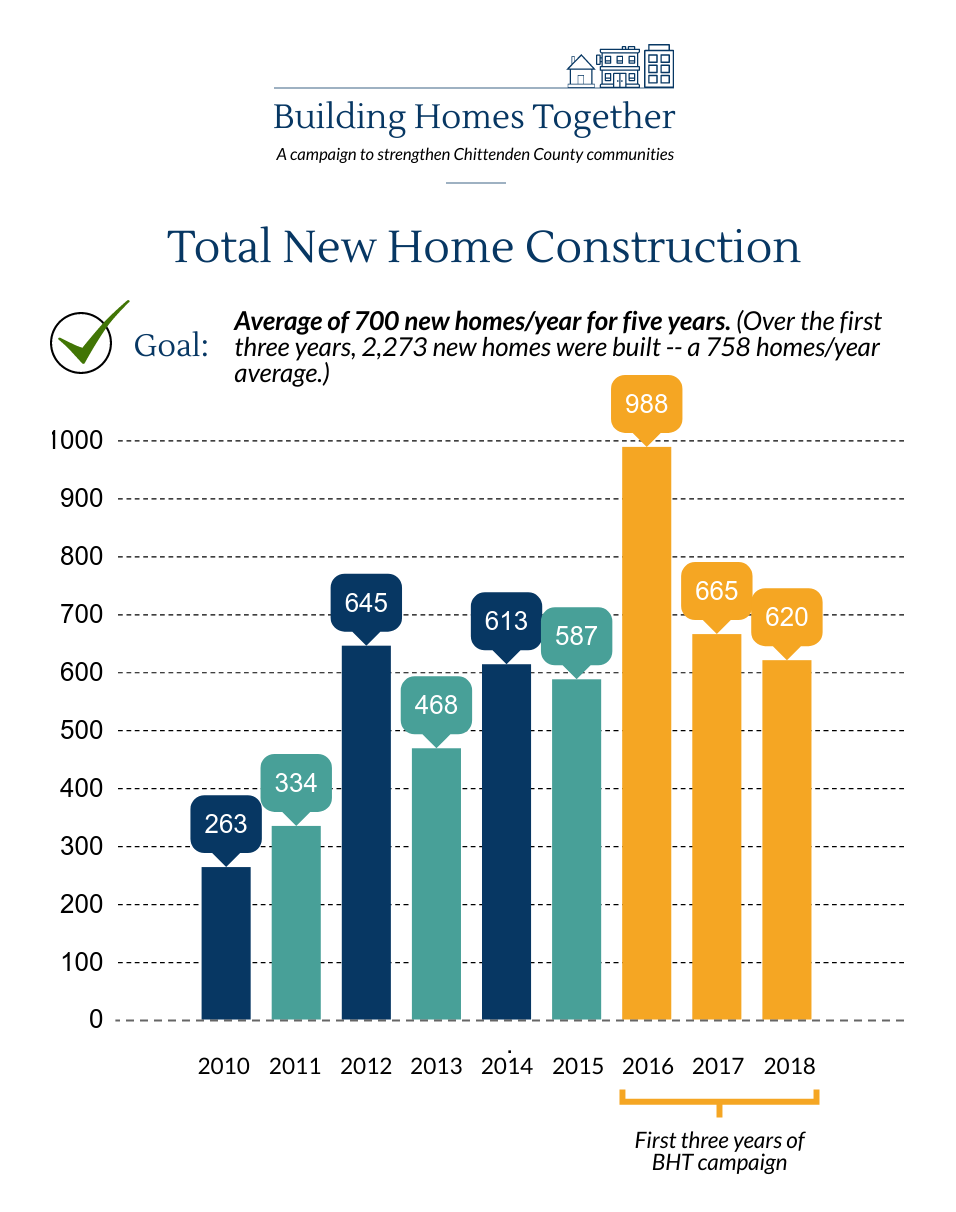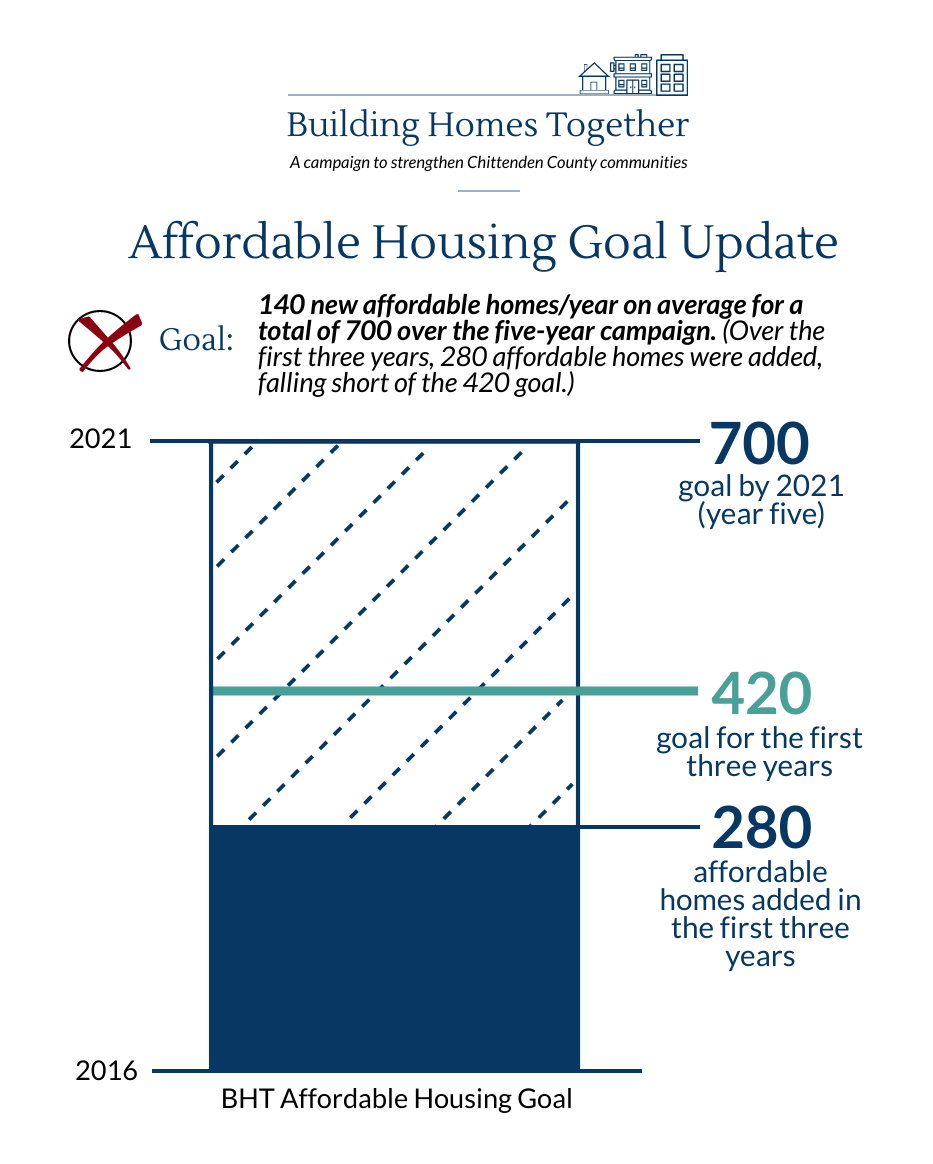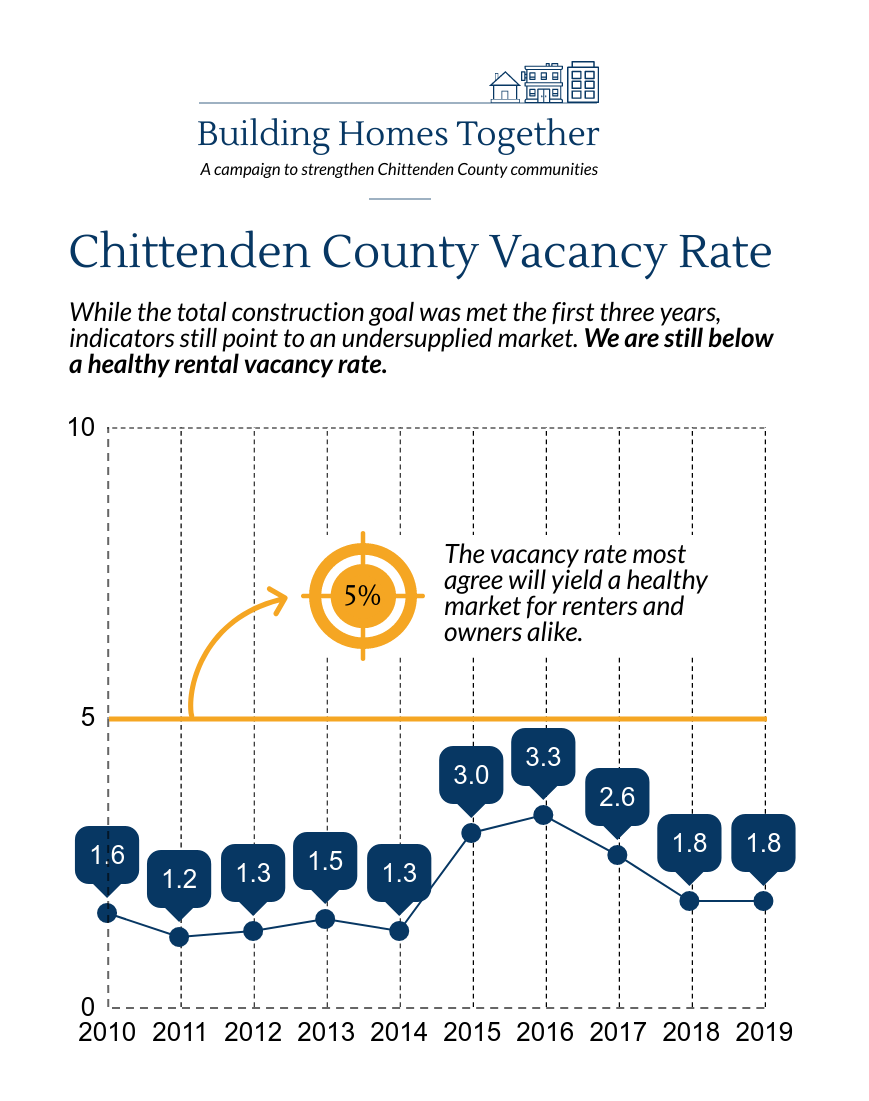A campaign to encourage housing production in Chittenden County is keeping apace of its overall production goals, but the gap between housing costs and wages is growing housing leaders announced today.

There were 620 homes developed and ready for occupancy in 2018. Over the first three years of the campaign an average of 758 homes were built each year ahead of the pace needed to meet the campaign’s goal of 3,500 homes over five years.
“While overall housing production is strong, we know that we need to build more affordable housing to sustain truly inclusive communities and we’re just not doing that,” said Brenda Torpy of the Champlain Housing Trust. With over 2,200 homes built in the county in the last three years, only 280, or 13%, became permanently affordable. That’s well shy of the campaign’s goal of 20%.
The Building Homes Together campaign was launched in 2016 by Champlain Housing Trust, Chittenden County Regional Planning Commission and Housing Vermont, and is supported by over 100 public officials, business and nonprofit leaders. The organizations combine public education, advocacy and training in efforts to increase the amount of housing stock for people of all incomes in the County.
“The campaign has succeeded on one front, and that’s good news,” added Charlie Baker of the Chittenden County Regional Planning Commission, “but we still see anemic vacancy rates which demonstrate a pent-up need and an ongoing need to continue this rate of building.” The long-term vacancy rate in Chittenden County is 1.8%. Experts consider a vacancy rate between 3 and 5% to better balance the needs of renters and owners.

“We are heartened by the understanding in local communities to address the needs of low wage workers and those priced out of the market,” said Nancy Owens of Housing Vermont. “The State’s Housing Revenue Bond is adding some new affordable homes to our region already, with more on the way. Adding to and sustaining this type of investment over several years is the best way to address workers’ housing needs.”
Since the campaign launched, many initiatives to address affordability have started on the municipal level in Chittenden County communities, including active housing commissions or tasks forces in several towns or cities, adoption of additional planning tools like inclusionary zoning are being used or explored, and housing trust funds have been created or expanded by communities to encourage more affordable housing.
More information about the campaign, including the data collected over the first three years, is available at http://www.ecosproject.com/building-homes-together. 


